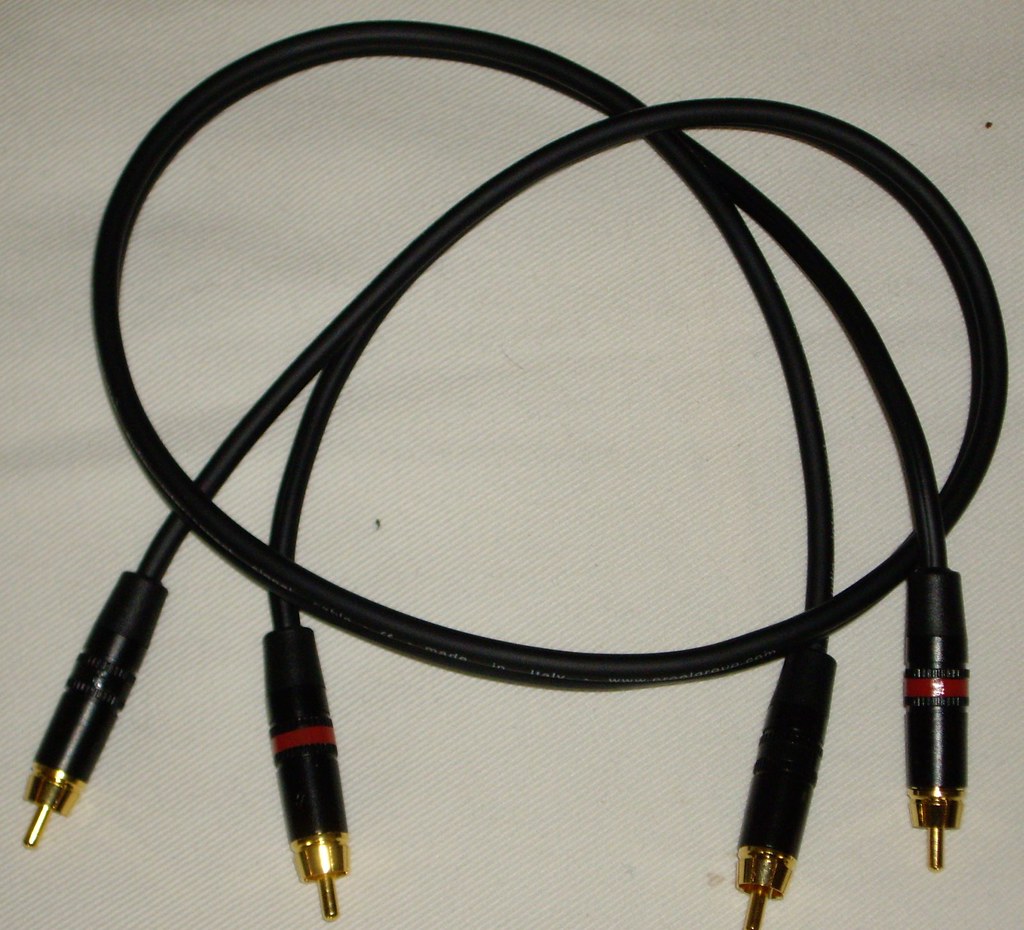The main stance of the cable sceptic is that when you measure a cable there is no difference from one to another that can account for the reported sound quality differences. Cable believers reply that is not true, there are differences between cables and then refer to cable maker reports of how their cable is made differently and therefore sounds different. But in Part 2 it has been shown that is a non sequitur and cable makers cannot make a connection between how a cable is made, what it is made of and sound quality.
Cable believers and makers site potential differences caused by skin effect, jitter (for digital cables), copper purity, copper vs silver, braiding the cable, solid core, multiple strands, wire thickness (AWG), the type of sheething, the connector (gold vs nickel plating). But they ignore two factors that do have an affect on sound quality.
Cable length
Testing has found one definite measuement that has an effect on cables, length. That particulalry applies to digital cables where the likes of USB has a recommended maxiumu length. http://www.datapro.net/techinfo/usb_info.html
"The most aggravating limitation of USB is the length restriction. Because of the nature in which data is carried through the cable, USB has an accepted maximum length of 15 feet. Some devices, depending on power needs and data bandwidth, may be able to go beyond this, but there are no guarantees"
Testing of HDMI cables has found they start to fail as the length goes up
http://www.audioholics.com/education/cables/long-hdmi-cable-bench-tests/hdmi-cable-testing-results
There are less definitive answers to the length an analogue cable can go to, but as it can act as an ariel the longer it is the more shielding it should have and the thicker and stronger it should be. Pro audio often uses very long cable lengths and strength and shielding is important, more so than in a domestic hifi setting.
However, this is not so much a sound quality difference as much as either the cable works or it does not. So sound quality is reduced not buy 'poor bass' or 'splashy treble', but by crackles and drop outs.
Cable resistance
I am sure, but from my own experience as opposed to testing that cables can also be affected by resistance. There is science behind that experience, attenuation. The higher the resistance the greater the attenuation.
http://en.wikipedia.org/wiki/Attenuator_%28electronics%29
"A line-level attenuator in the preamp or a power attenuator after the power amplifier uses electrical resistance to reduce the amplitude of the signal that reaches the speaker, reducing the volume of the output."
Russ Andrews sell attenuators and attenuated cables and here is his explanation of how attenuation affects volume;
http://www.russandrews.com/viewindex.asp?lookup=0®ion=UK¤cy=GBP&article_id=attenuation&target=blank&customer_id=PAA1760123511590TLZQFWRZKRJCZLMP
Try this yourself if you are unsure of volume and sound quality. Turn your amp right down and at low volumes there will be a lack of dynmaics and detail. Then turn the volume up and you start to hear a sweet spot where the music sounds at its best. Depending on your amp and your own subjective preference that sweet spot size will vary, but it tends to be between 10 and 12 o'clock on the dial. As you go louder the fine detail disappears again and distortion and clipping starts to happen.
The ear can detect a difference from as little as 0.2db volume. From Head-fi and member Nick_Charles "I have 4 CD players and no two have the same output level and I can DBT the loudest and quietest 14/14 , but when I level match nope !"
However, usually an audible difference in volume is higher than that " Subjectively, a 2-3 dB change in sound level is barely perceptible; if someone asks you to "turn up the volume a little," you will probably increase the sound by at least 3 dB."
http://www.silcom.com/~aludwig/EARS.htm#Top
Then from the same article, Fletcher Munsen Curves which show how the ear will hear two tones which are at the same sound pressure level as having different loudness.
To me this all suggests that volume has a big influence on sound quality and any affect on volume will cause subjective reports of sound quality to vary. In any case sound quality is a subjective matter anyway.But you cannot market a cable by saying, it will make the volume rise slightly, so improving sound quality, as you can do the same thing by adjusting the volume control on your amp!
(Maybe we should demand better quality of volume controls instead of cables?)

No comments:
Post a Comment